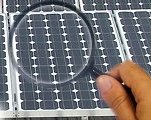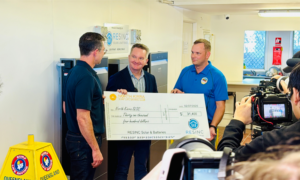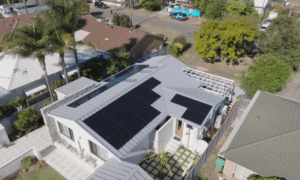National solar power solutions provider Energy Matters has weighed in on a news item published earlier today about sub-standard solar power installations occurring in Australia.
“As unfortunate as the situation is, we’re pleased the issue is gaining more coverage,” says Energy Matters co-founder Max Sylvester. “As competition heats up, some Australian providers are looking to cut corners where they shouldn’t and this can sometimes translate to shoddy workmanship affecting efficiency, but more importantly; also safety. The last thing our industry needs is a insulation-type fiasco.”
“Shonky operators need to be weeded out now; otherwise in a couple of years down the track we’ll be seeing reports of systems failing left, right and centre.”
Mr. Sylvester says consumers are generally unaware of the potential issues and Energy Matters’ solar power consumer guide has been a popular feature of their site.
“Our guide has been viewed over 30,000 times since we published it in early 2009 and we’re very pleased to be able to offer this tool to help raise awareness of some of the traps and pitfalls to watch out for when considering investing in a solar power system.”
While happy to see the issue of sub-standard installations in Australia given high-profile media attention, Mr. Sylvester took exception to a quote stating that a 1.5kW system is really only enough to power a shed.
“Perhaps it was a misquote. Either that or the shed in question is full of inefficient appliances running 24/7; or what was being referred to was an improperly installed 1.5kW system using low quality components. Our 1.5kW systems certainly generate far more than what the average back yard shed would use.”
“A properly installed 1.5kW home solar power system based on quality components such as we use will generate on average 6 kWh of electricity a day in Sydney and around the same amount in Melbourne. Based on that figure, people only need to look at the daily average on their electricity bills to determine how much solar power can contribute to their electricity needs.” said Mr. Sylvester
“We also show our clients easy ways to cut their electricity use dramatically with simple energy efficiency strategies which mean that solar power can contribute even more to their energy requirements. In some cases, their 1.5kW systems generate more power on average than they use, so our customers actually make money on their systems through feed in tariff programs that exist in most states. With feed in tariff payment rates pegged higher than market electricity rates, even if a system doesn’t contribute 100% of a household’s electricity, the difference can still mean a healthy financial return for a system owner.”
“What should also be remembered is that even though all solar power systems go towards reducing Australia’s energy related greenhouse gas emissions, quality systems that stand the test of time will make a far more substantial contribution; as the first few years worth of energy produced pay back the energy used during the creation of the solar panels.”
Related:












































